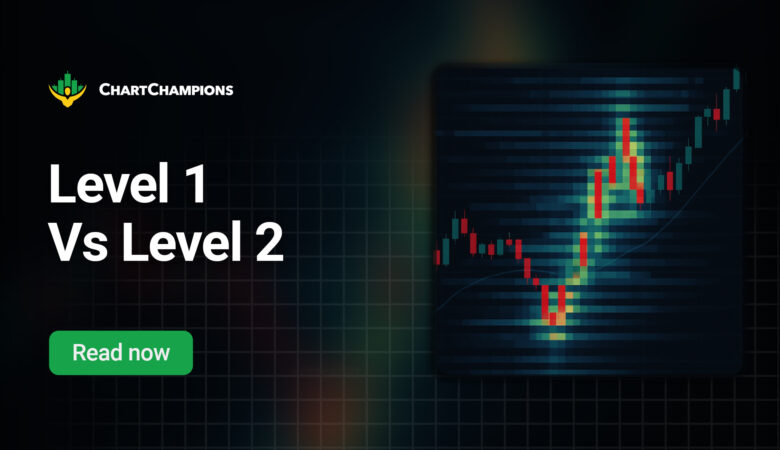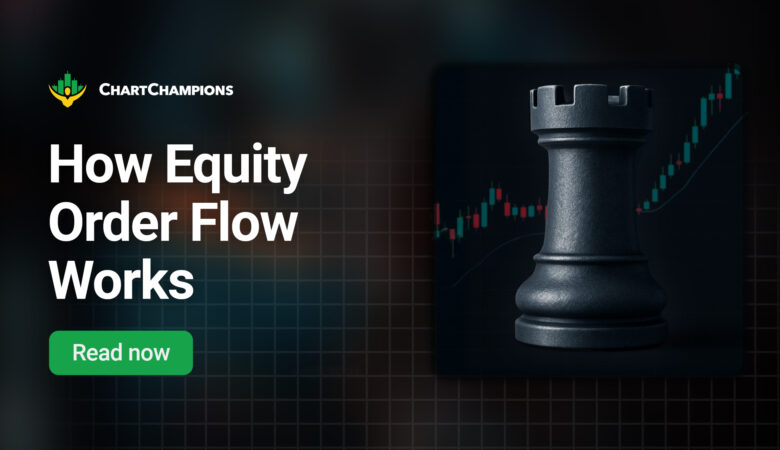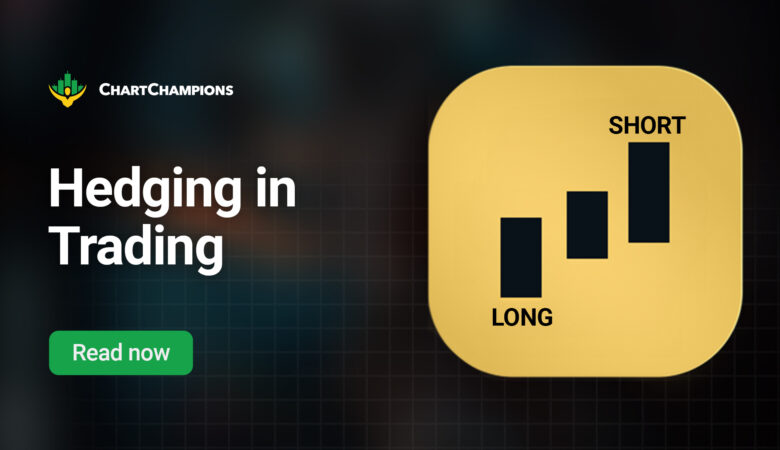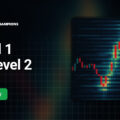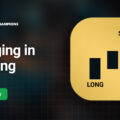Not everyone starts on the right foot in trading. We all make mistakes here and there. Even after years have passed, we can still make some high-cost trading mistakes. Our main goal for this article is to explore the most common trading mistakes and how to avoid them.
We understand that everything comes from experience, but here at Chart Champions, we will do our best to help you succeed in trading in a simple and effective way. So, let’s start!
No Plan, No Trade
Lacking a trading plan is one of the biggest challenges for traders. Many new traders easily start their trading sessions without a plan, often following random tips from so-called trading gurus.
There are many reasons why we might pick up our smartphones, open the Bybit or TradingView app, and start placing traders without understanding the market context at that moment. Many of these reasons stem from a lack of education and not knowing how to properly use available tools.
Scrolling through social media and seeing successful traders showcase their results is very common nowadays. Wanting those results and making them our main goal is easy, but the real focus should be on the process behind them. That is what matters in a trading career. The process.
Planning a trade is a sacred time for professional traders. Understanding the context and knowing how to use specific tools is something that, with enough education and dedication, can be mastered.
Overtrading
Unfortunately, one mistake can lead to another. The lack of a trading plan can drag us into a highly negative look known as overtrading, where our decisions become blinded by negative emotions.
Overtrading is the urge to place trades too frequently without a specific plan, thinking that the more trades we execute, the more profits we will make. The reality is that overtrading has a very high transactional cost, not to mention the emotional toll, leading to significant losses.
We need to keep things as simple as possible. Every trader should adopt at least one solid strategy and fully understand its conditions. This includes knowing the ideal market conditions—whether the trend is bullish, bearish, or in consolidation—where our setups are most effective. This way, we will only take trades when conditions are met. Essentially, we let the trades come to us, prioritising quality over quantity.
This has been one of the key factors in improving the setups quality of Severin, one of our top coaches at Chart Champions, who always reminds us to focus on the best trades—what he calls A+ Setups.
A useful tip to identify if you are falling into overtrading is to keep a trading journal, where you meticulously record your actions. This makes it easier to recognize overtrading patterns.
Negative Emotions Taking Over
Letting emotions take control can lead us to overtrade. Impatience to see results, fear of missing out on a market trend, and greed when winning are negative emotions that can easily take over if we are unaware of our actions while trading.
Many professional traders practice mindfulness and journaling, which help them maintain emotional balance and become aware of their feelings.
Nowadays, we also have wearables that provide valuable metrics. For example, the Oura Ring can measure stress levels—an interesting data point to assess when trading under pressure.
Make it a habit to keep a journal, practice mindfulness, and take advantage of smart tools like wearable rings to track your emotions in real time.
Poor Risk Management
Poor emotional management leads to overtrading, which in turn increases our losses, resulting in bad risk management. Everything seems to be negatively interconnected at this point.
Ignoring risk management is a major factor leading to trading accounts blowing up. However, it’s not merely about emotions or making excessive trades. It also occurs when we consciously choose to neglect to employ a stop loss or trade with an excessively large position size without fully understanding the risks.
Here are 2 basic risk management recommendations that apply to any market and any asset—whether you are trading Bitcoin or futures like ES or NQ:
- Use only a small percentage of your account per trade—recommended position size is between 1% and 5%.
- Set a stop loss.
Yes, it may sound simple to say “Set your stop loss”, but the reality is that many traders fail to do this. Just remember that skipping this critical step exposes you to substantial losses by holding onto a trade that moves against you.
Before entering a trade, always have a clear invalidation level. Every trading idea has its invalidation point and an expiration date. Think of your stop loss as an emergency button for unexpected situations.
Nothing should be left to chance in trading. Managing losses and gains is entirely our responsibility.
Over-Leveraging
Leverage is a mechanism available on most trading platforms that allows us to access more capital than we actually have. It can amplify profits and losses, making leverage a fundamental tool to understand.
For example, if we use $100 of our capital to open a position with 10x leverage, we can control a trade worth $1,000 without actually having that full amount. This is the power of leverage.
Many traders misuse leverage since some platforms sometimes allow leverage of up to 100x or even 200x.
Starting with low leverage levels—between 2x and 10x—is always recommended until you understand how it works. Once mastered, you will realise you don’t need to use all your capital to open a position. Instead, leverage should be used strategically as a powerful tool in your trading arsenal.
Failing to Manage Losses Properly
Let’s be clear and honest: losses are part of the process of trading. There is no way to avoid them, so the best thing for our peace of mind and trading adaptation is to accept them.
Our best recommendation is to keep a detailed record of the trades you take and analyse what went wrong. This will help identify patterns and avoid repeating the same mistakes in the future.
Failing to learn and adapt
Markets are living, dynamic entities that react to socio-economic events and evolve over time. What works today may not work in six or twelve months.
As traders, it is crucial to learn new techniques and adapt to market conditions, which are constantly changing. Even when we understand different market phases, some strategies may stop working at some point.
Continuous education should be part of our trading development, especially at the beginning of our trading career. Seeking support from courses, books, and trading communities is essential when understanding the financial world on our own.
Over time, with education and experience, we can develop excellent strategies tailored to our preferences and lifestyles.
Once we understand and refine our strategy, the next phase is optimization—continuously collecting statistical data to improve current strategies or even develop new ones suited to evolving market cycles.
Ignoring the Importance of Mental Health in Trading
Many people talk about trading psychology, but few emphasize what truly matters: mental health in trading.
Mistakes like poor risk management, emotional trading, and over-leveraging can become toxic habits that negatively impact our trading career. This is why it’s crucial to develop discipline and, above all, patience.
We don’t need to spend endless hours staring at charts waiting for a setup. We must learn to step away from the screens when feeling overwhelmed. Remember, as humans, we also need social interactions, family time, and even connecting with nature—things that bring joy and balance to our lives.
At Chart Champions, we understand that taking breaks is essential to reconnecting with our personal goals, returning refreshed to the charts, and continuing to improve to achieve success. Resting is also part of growth.
Conclusions
Many common trading mistakes are interconnected and can affect our overall confidence, leading to significant capital losses. However, this can be seen as a positive fact. By simply becoming aware of our actions while trading or practising on demo accounts, we can identify negative emotions that lead to overtrading or overleveraging.
Simple practices such as mindfulness and maintaining a trading journal have been proven to help build the discipline needed to stay aware of our actions while also keeping a record of our trades.
By addressing one issue, we inevitably improve other aspects, such as our mental health, the importance of trading psychology, and ultimately, effective risk management, allowing us to handle losses appropriately.
Remember, always have a trading plan, and if you don’t have one yet, don’t worry. With the right education and guidance, you can learn to conduct proper technical analysis, including identifying invalidations and entry points and ensuring a structured process from analysis to execution.
See you in the charts!












